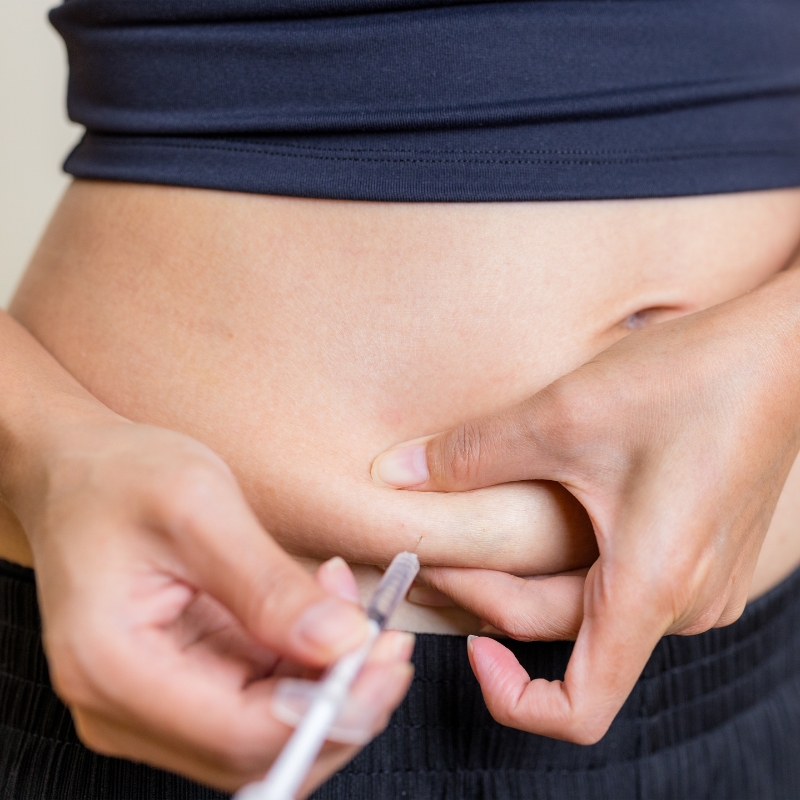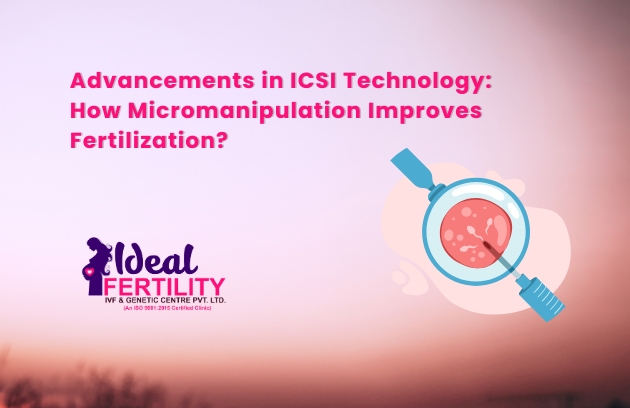Table of Contents
Infertility can be a challenging journey for couples trying to conceive, particularly when male infertility is the primary cause. In recent years, Intracytoplasmic Sperm Injection (ICSI) has revolutionized assisted reproductive technology, offering hope to those struggling with severe sperm-related issues. As a highly specialized technique, ICSI directly injects a single sperm into an egg, improving fertilization rates significantly.
The continuous advancements in ICSI technology-particularly in micromanipulation tools, sperm selection techniques and embryo culture conditions-have further enhanced fertilization success rates. These developments have positioned ICSI fertility treatment (आईसीएसआई प्रजनन उपचार) as one of the most effective methods for overcoming male infertility and maximizing the chances of a successful pregnancy.
ICSI: A Breakthrough in Fertility Treatment
ICSI treatment is an advanced form of in-vitro fertilization (IVF) (इन-विट्रो फर्टिलाइजेशन – आईवीएफ) designed for couples where the male partner has:
- Low sperm count (oligozoospermia)
- Poor sperm motility (asthenozoospermia)
- Abnormal sperm shape (teratozoospermia)
- Complete absence of sperm in semen (azoospermia)
Unlike conventional IVF, where thousands of sperm are placed near an egg in hopes of fertilization, ICSI IVF involves selecting a single, high-quality sperm and injecting it directly into the egg’s cytoplasm. This micromanipulation technique ensures successful fertilization, even in cases of severe male infertility.

1. High-Resolution Microscopes for Precise Sperm Injection
- Modern ICSI clinics use high-magnification microscopes that allow embryologists to assess sperm structure in great detail.
- The latest imaging techniques enable the selection of sperm with the best morphology and motility, increasing the chances of successful fertilization.
2. Improved Sperm Selection Techniques
Selecting the best sperm is a critical step in ICSI fertility treatment. New technologies have enhanced the ability to pick the healthiest sperm for injection:
- Motile Sperm Organelle Morphology Examination (MSOME): Allows for the selection of sperm with the best internal structure.
- Intracytoplasmic Morphologically Selected Sperm Injection (IMSI): Uses ultra-high magnification to identify the most viable sperm, reducing the risk of failed fertilization.
- Magnetic-Activated Cell Sorting (MACS): Helps separate damaged or apoptotic sperm from healthy ones, improving fertilization outcomes.
3. Laser-Assisted Hatching for Better Implantation Rates
- Laser-assisted hatching has become a valuable addition to ICSI IVF, helping embryos hatch and implant more effectively in the uterus.
- This technique is especially useful for couples with previous IVF failures or poor embryo development.
4. Time-Lapse Embryo Monitoring
- Advanced incubators with time-lapse imaging allow embryologists to monitor embryo development without disturbing the culture conditions.
- This improves embryo selection, ensuring only the healthiest embryos are transferred, enhancing pregnancy success rates.
5. Cryopreservation for Future Use
- The introduction of vitrification has greatly improved ICSI clinic (आईसीएसआई क्लिनिक) success rates.
- Both eggs and embryos can now be frozen with minimal damage, allowing couples to attempt pregnancy at a later time.
Success Rates of ICSI: How Manipulation Improves Fertilization?
With recent advancements, ICSI fertility treatment now boasts:
- Fertilization success rates of 70-85%
- Embryo implantation rates of 50-60%
- Live birth rates of 40-50% per cycle
While not every fertilized egg results in a successful pregnancy, continuous improvements in micromanipulation and embryo culture conditions have led to higher success rates in ICSI clinics worldwide.
Who Can Benefit from Modern ICSI Treatment?
ICSI is ideal for couples facing:
- Severe male infertility (गंभीर पुरुष बांझपन) (low sperm count, poor motility, abnormal sperm shape).
- Unsuccessful previous IVF attempts due to poor fertilization rates.
- Sperm retrieval issues (शुक्राणु पुनः प्राप्ति संबंधी समस्याएं) where sperm must be extracted directly from the testes.
- Fertilization barriers such as thick zona pellucida (outer shell of the egg).
ICSI IVF vs. Conventional IVF: Key Differences
| Factor | ICSI IVF | Conventional IVF |
|---|---|---|
| Sperm Selection | Single sperm injected | Multiple sperm placed near the egg |
| Success with Low Sperm Count | High | Lower |
| Risk of Failed Fertilization | Lower | Higher |
| Micromanipulation | Required | Not required |
| Recommended For | Male infertility cases | Unexplained infertility |
Future Innovations in ICSI Technology
As technology advances, several groundbreaking techniques are emerging:
- Artificial Intelligence (AI) in Embryo Selection: AI-powered software can analyze embryos and predict which ones have the highest implantation potential.
- Sperm DNA Fragmentation Testing: New methods can assess sperm DNA integrity, improving the chances of selecting healthy sperm.
- 3D Holographic Imaging in ICSI Clinics: Allows for a better understanding of sperm and egg interaction, enhancing the selection process.
Conclusion
ICSI has transformed the landscape of assisted reproductive technology, offering hope to couples struggling with male infertility. With state-of-the-art micromanipulation tools, improved sperm selection techniques and advanced embryo monitoring systems, ICSI has become one of the most effective fertility treatments available today.
For couples facing fertility challenges, consulting an ICSI clinic equipped with the latest technology can significantly improve their chances of conception. As ICSI technology continues to evolve, the future of fertility treatment looks even more promising, bringing parenthood within reach for countless families worldwide.
FAQs About ICSI Technology
Q1. Is ICSI better than conventional IVF?
ICSI is superior for male infertility cases, while conventional IVF works well for unexplained infertility.



